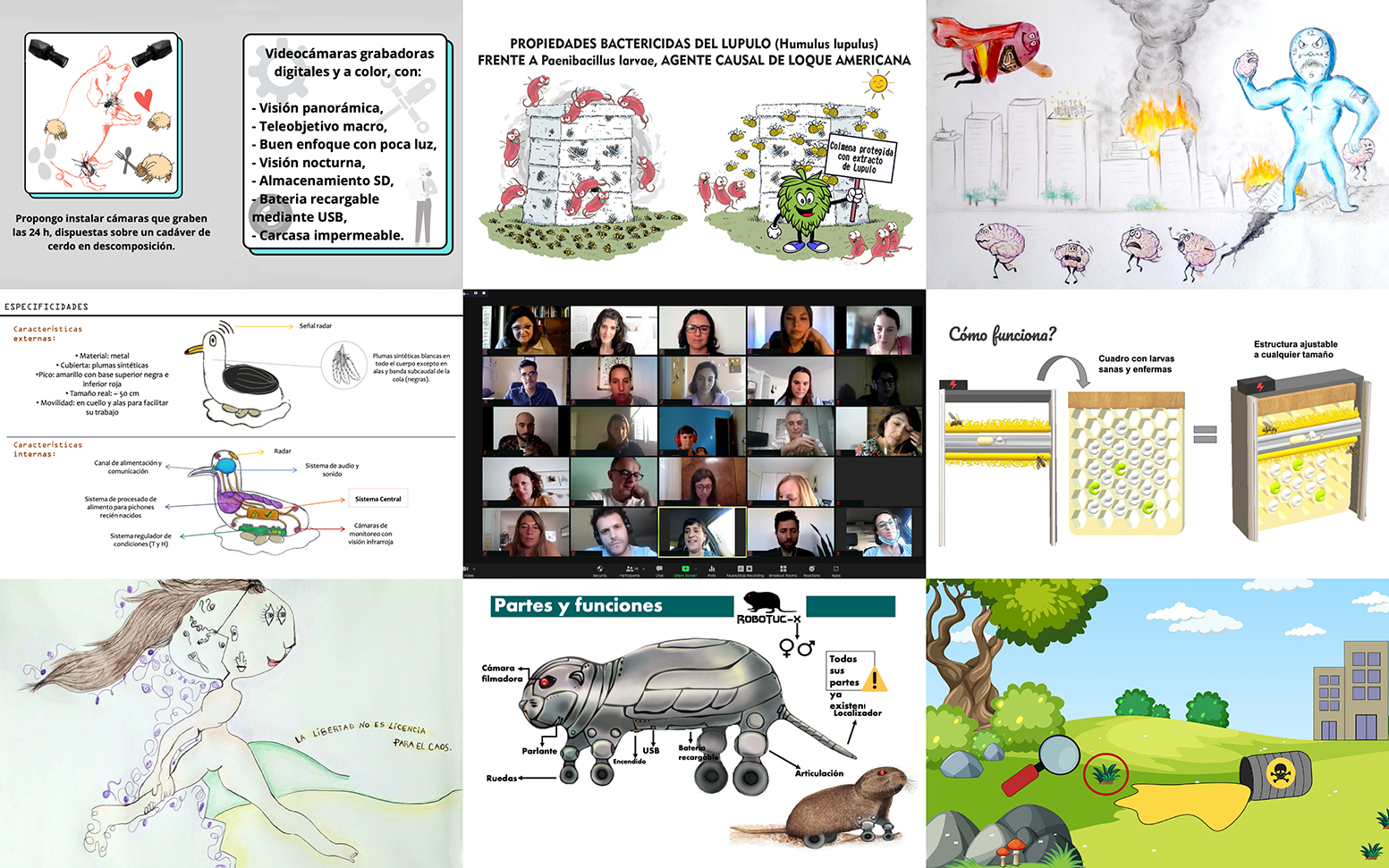
Despite the many challenges, COVID restrictions pushed society to explore new ways of doing familiar tasks that before had been truly unthinkable. One of these tasks was teaching: rethinking the traditional in-person modality of instruction brought many headaches and a big learning curve, but also opened the door to new opportunities, like being able to reach to populations that were geographically very far away. To me, this was the trigger to bring creativity closer to science.
I had been teaching remotely for almost a year to my Princeton students, when I casually mentioned to Graciela Salerno – a renowned biologist and researcher who mentors science PhD students in Argentina: if creative thinking would be taught and fostered in experimental sciences as it is in art and design schools, maybe scientists would be better prepared to deal with future pandemics or similar global phenomena. Don’t you think? This was the seed for the Creativity to Rethink Scientific Research or Creativity + Science course, as we call it now.
In 2021, Graciela Salerno and I taught the first cohort of the online Creativity + Science course. Although, the hands-on interactive modality of the course only allowed for 12 students, we had 35 students at different stages of their PhD in different biology specializations enrolled. We took this as a positive indicator and interest in the subject, but we didn’t imagine how much it would transform students’ life.
The course showed students a different way to see and understand the world, science, research, and their own life. Each student’s journey was unique. Through reflective activities and hands-on techniques taught in the course, each student discovered their own mental blocks hindering their ability to imagine and be creative, and identified their own tools and strategies to overcome those blocks. Students’ final projects echoed these positive results, with some of the ideas redirecting their PhD thesis in significant ways. For the following editions of the course, more than 65 students and professors (from Argentina and Latin American countries) enrolled in the course.
Looking ahead
The goal with this course is to showcase the need for integrating imagination and creativity into any subject’s curriculum to equip students to (re)learn how to imagine and be creative. To be able to innovate and collectively tackle complex challenges, we need to start with individual creativity, as Ruth and Amabile suggested. Detaching imagination and creativity from only art and design subjects is the first step. By helping people regain control of these cognitive activities, we can start building the foundations for a creative, more healthy society.
The multiple editions of the course have generated large amounts of data – drawings, journal entries, divergent exercises, etc. – that we are analyzing to better understand the impact of creativity training in science as well as to identify pedagogical approaches that work better than others. The first paper we have published shed light on specific cognitive processes that such training should focus on to improve early-career scientists’ ability to generate both more and highly original ideas.
You can also learn more outcomes from the course in first person from students. Recently, I co-organized with Mariana Salgado a Creativity series (in Spanish) for the pod-cast Diseño y Diaspora. While some of the conversations in this series are with design or art related professionals, two of them are with former students from the Creativity + Science course, who afterwards joined the teaching team as teaching assistants. Yes, these interviews showcase the impact of thinking creatively in their scientific work, but, most importantly, they shed light on how both – Carolina and Nadia – have embraced their creative selves into their daily lives:
– Conversation with Carolina Vásquez (Spanish)
– Conversation with Nadia Marina Alves (Spanish)
– Conversation with Sheila Pontis (Spanish)
Building on this work, during summer, I am going to be teaching a few workshops on imagination and deliberate creativity aimed at helping people – scientists, educators, psychologists, engineers, lawyers, etc. – take control of their ability to imagine and create. Outcomes will bring benefits at individual and societal levels and in various domains: mental (spiritual, well-being, happiness) and physical health, science, the environment, politics, and technology.
More details coming soon!
—
Pontis, Vásquez, & Salerno (2024) Creative quality matters: Teaching early-career scientists to think in multiple directions, Thinking Skills and Creativity, 51(101451), https://doi.org/10.1016/j.tsc.2023.101451.
Leave a comment